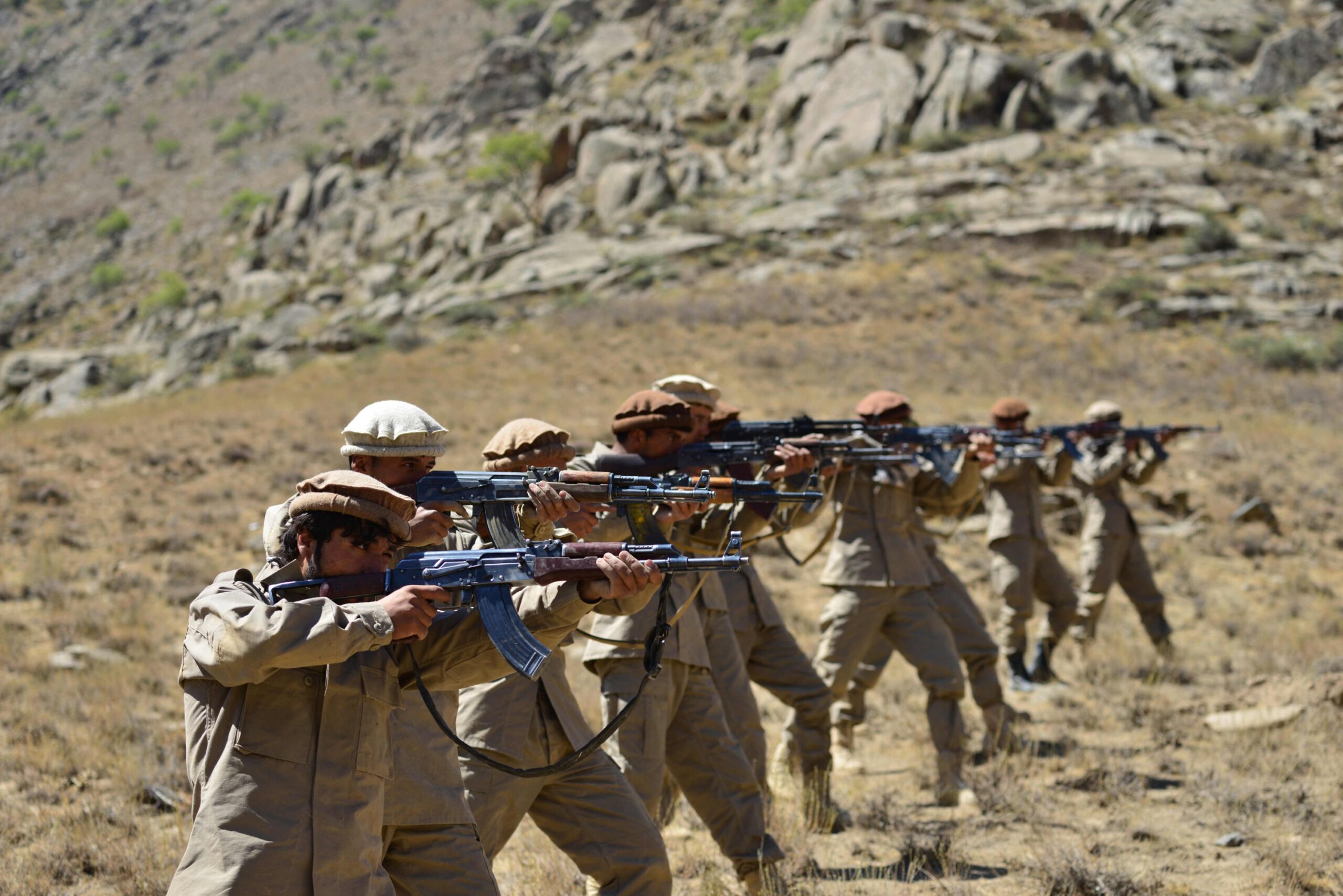Bangladesh in the Indo-Pacific Strategy is like a thrilling game of chess. The pieces are constantly shifting, and the stakes are sky-high. The Indo-Pacific Strategy of the United States (US) aims to counter China’s influence in the region. It also seeks to increase US influence in South Asia. China, on the other hand, aims to change the global order by decreasing the US unipolarity. Both countries want Bangladesh as a key partner in their respective mission and vision. Bangladesh’s geostrategic location makes it invaluable to both countries. As a pivotal player in the strategic chessboard of South Asia, Bangladesh finds itself entangled in the increasingly intense geopolitics of the Indo-Pacific region. Having said that, the Indo-Pacific has become a focal point for the global power tussles of the 21st century.
Bangladesh’s Strategic Importance in the Region
In light of the USA-China rivalry, the Indo-Pacific has witnessed the rise of competing geopolitical agendas. This region is a crucial corridor for international trade. India, Bangladesh’s neighboring country, is another key player in this strategically important area. Bangladesh, nestled between the Bay of Bengal and two regional powers like China and India, is under mounting pressure from multiple actors vying for influence. With a population of 170 million people in 2024, Bangladesh is on an economic rise. As a result, the geopolitical pressure from the Indo-Pacific Strategy is becoming more complex and consequential. This trend is expected to continue in the future. A closer look at the challenges and strategies reveals how Bangladesh can develop strong ties with key global players.
Bangladesh’s Geographic and Economic Position
In terms of Bangladesh’s strategic importance in the region, it occupies a unique and overarching position at the heart of the Indo-Pacific, a vast expanse that stretches from the shores of Africa’s east coast to the Western Pacific.
In the regional context, Bangladesh is positioned at the juncture of South and Southeast Asia. It shares borders with India and Myanmar and controls access to the Bay of Bengal. The Bay of Bengal is a crucial maritime corridor that serves as a gateway to the broader Indo-Pacific. This maritime pathway directly facilitates key shipping lanes, including routes through the Malacca Strait. The Malacca Strait is one of the world’s most important and busiest choke points. It links the Indian Ocean to the Pacific Ocean.
In addition to its strategic location, Bangladesh has been experiencing rapid economic growth. This growth is driven by its expanding manufacturing sector and the prospects of natural resources, such as offshore gas fields and minerals in the Bay of Bengal. According to the World Bank, Bangladesh’s economy grew by 5.2% in 2022. Projections for 2024 estimate a growth rate of around 5.6%.
Apart from this point of view, the strategic significance of Bangladesh lies in its political and economic alliances. Through the Belt and Road Initiative (BRI), the Bangladesh-China relationship is burgeoning, raising eyebrows in Washington and New Delhi as they both consider China a global threat. Considering all the facts associated with strategic importance, Bangladesh has become a contested space in the evolving geopolitical order.
Implications of the Indo-Pacific Strategy for Bangladesh
The Indo-Pacific Strategy, articulated by the United States, emphasizes the following multilateral approaches: security, economic development, and maritime freedom. Due to its increased influence in the region, Washington has rallied its allies—India, Japan, and Australia—under the Quadrilateral Security Dialogue (Quad). The Quad aims to preserve the rule-based international order. Another key objective is to contain China’s assertive presence in the region. This includes countering China’s expansionist activities in the South China Sea, its economic clout through the Belt and Road Initiative (BRI), and its influence over smaller regional states like Bangladesh.
The pressure exerted on Bangladesh by the Indo-Pacific Strategy manifests itself in several ways. First of all, Bangladesh faces growing demands to align its foreign policy with the USA. This request conflicts with its robust economic ties to China. As part of the US outlook toward Bangladesh, the USA has urged the country to engage with the Quad. The USA has repeatedly called for military cooperation and enhanced maritime security collaborations within the framework of the Indo-Pacific Strategy.
However, as part of its foreign policy, Bangladesh has been increasingly cautious. It recognizes the potential economic fallout from straining relations with China. As of 2024, China remains Bangladesh’s largest trading partner. China’s investments in Bangladesh have already exceeded nearly $10 billion. These investments include critical infrastructure projects like the Padma Bridge, which opened in 2022, and the Dhaka-Chittagong Railway. Aligning too closely with the Indo-Pacific Strategy might jeopardize these vital economic ties. This situation puts Bangladesh in a precarious position.
Bangladesh in the Indo-Pacific Strategy: The Growing Pressure
What is more, in recent years, the pressure is coming through diplomatic overtures and defense agreements. For instance, the US has already increased its military engagements with Bangladesh. The US is seeking to enhance defense ties through programs like the Foreign Military Financing (FMF) and International Military Education and Training (IMET). As part of this, the US has already offered sophisticated military equipment and joint exercises.
Specifically, the US Navy’s periodic visits to Chittagong Port and Bangladesh-USA naval exercises demonstrate these efforts to integrate Bangladesh into the broader Indo-Pacific security apparatus.
In this regard, yet, Bangladesh has remained wary, opting to balance its defense partnerships without fully committing to the US-led framework.
On the other hand, China’s response has been equally forceful; it has aggressively pushed forward its Belt and Road Initiative (BRI), with Bangladesh as a key partner. As a key strategy of the Belt and Road Initiative (BRI), China has already invested heavily in many key sectors: infrastructure, energy, and telecommunications. As part of its strategy under the Belt and Road Initiative, the development of highways, the construction of deep-water ports—such as Payra Port—and power plants are just a few examples of China’s extensive economic footprint in Bangladesh . This means that through investments, China has already deepened its economic relationship with Bangladesh.
China’s influence extends beyond just economics. Its soft power diplomacy has also been evident in areas such as education (offers scholarships to Bangladeshi students with other perks) and cultural exchanges . Additionally, Bangladesh has purchased military hardware, ranging from submarines to missile systems. China’s economic leverage, along with the above-mentioned soft power diplomacy, has allowed it to counterbalance the geopolitical pressure of the Indo-Pacific Strategy. Practically, in 2021, China warned Bangladesh not to join the Quad.
The India Factor
Meanwhile, India, as a central player in the Indo-Pacific Strategy, has its own set of interests concerning Bangladesh. New Delhi views Bangladesh as a premier partner for maintaining its security, both in terms of border management and regional stability. As a key part of Indian foreign policy, India’s “Act East” policy envisions Bangladesh as a gateway to Southeast Asia, and it has sought to strengthen its economic and military ties with Bangladesh. India has provided loans and grants for several infrastructure projects in Bangladesh, including the construction of power plants and roadways. China’s presence in Bangladesh is a matter of concern for India.
Historically, there is a clash between India and China; both countries want Bangladesh in their own radius.
Therefore, the competition between India and China for influence in Bangladesh has placed the country in a difficult position. To maintain mutual relationships with both influential countries, Bangladesh must balance its relationships while avoiding entanglement in their geopolitical rivalry.
Bangladesh’s Diplomatic Tightrope: The Search for Balance
Since the political landscape is evolving and translating into a cold war, Bangladesh needs to maintain its foreign policy supported by its constitution: friendship to all, malice towards none. Bangladesh should skillfully and prudently navigate the complex geopolitical landscape, avoiding overt alignment with any single bloc. The country needs to seek benefits from the economic and security points of view presented by both the Indo-Pacific Strategy and the Belt and Road Initiative. As of today, Bangladesh is maintaining this balance skillfully.
Pakistan in the Equation
Notably, Pakistan can play a pivotal role in this dynamic. As a strategic ally of China and a country that also values its relationship with the United States, Pakistan presents a unique opportunity for Bangladesh to balance its relationships effectively. While many in Bangladesh are wary of India’s influence—given the historical tensions and ongoing rivalry between India and Pakistan—Pakistan can act as a counterweight to Indian hegemony in the region. This geopolitical nuance allows Bangladesh to deepen ties with Pakistan, which could enhance its negotiating power with both China and India.
For instance, while Bangladesh has participated in US-led military exercises, it has also continued to deepen its defense cooperation with China along with economic ties. Similarly, Dhaka has sought to bolster its ties with India. Bangladesh has already engaged in high-level diplomatic dialogues and economic partnerships while maintaining strong economic links with China . This nuanced approach reflects, as of 2024, Bangladesh’s overwhelming desire to maintain its sovereignty and avoid becoming a pawn in the larger geopolitical struggles of the Indo-Pacific.
A Strategic Compass for the Future
To sum up, as the Indo-Pacific region becomes an arena for escalating great power competition, Bangladesh finds itself at a critical juncture and may reap the economic and security benefits. The geopolitical pressures from the Indo-Pacific Strategy led by the US, alongside China’s assertive Belt and Road Initiative, necessitate Bangladesh to design a prudent foreign policy. While the opportunities for economic growth and security cooperation are abundant, the risks of entanglement in broader geopolitical conflicts loom large.
By cultivating a strategic relationship with Pakistan, Bangladesh can further enhance its position amidst competing pressures.
This partnership could serve as a stabilizing factor, allowing Bangladesh to navigate its complex relationships more effectively, while also mitigating any potential fallout from India’s actions.
Bangladesh’s ability to balance its relationships with the United States, China, and India will determine its future trajectory in the Indo-Pacific. In this volatile environment, maintaining strategic autonomy and a pragmatic foreign policy will be crucial to safeguarding Bangladesh’s interests amid mounting geopolitical pressure.
The views expressed in this article are the author’s own. They do not necessarily reflect the editorial policy of the South Asia Times.

![Sylhet, Bangladesh – 15 December 2014: Bangladesh in the Indo-Pacific Strategy is at a critical crossroads, caught between the ambitions of global powers [Image via Shutterstock]](https://southasiatimes.org/wp-content/uploads/2024/09/Bangladesh-1.webp)





